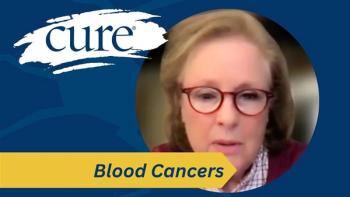
Biomarkers May Help Predict Heart Risk in Childhood Cancer Survivors
Recent research determined that two specific biomarkers may help predict and protect survivors of childhood cancer from heart risks, such as cardiomyopathy.
In survivors of childhood cancer, recent research has found that two common biomarkers may be able to predict heart risk, according to a news release from St. Jude Children’s Research Hospital.
The two biomarkers, known as global longitudinal strain (GLS) and N-terminal-pro-B-type natriuretic peptide (NT-proBNP), may help predict cardiomyopathy (a disease that makes it difficult for the heart to pump and circulate blood) within five years, compared with routine doctor evaluations for survivors of childhood cancer who may be high-risk and asymptomatic (absence of symptoms), the news release reported.
In particular, researchers from St. Jude Children’s Research Hospital determined that using these two biomarkers could help identify survivors who may appear to have normal heart function but are at higher risk of heart muscle function decline.
“This may be a much more sensitive way to identify childhood cancer survivors that might benefit from intervention at an earlier stage,” Dr. Matthew Ehrhardt, department of oncology at St. Jude, study lead and corresponding author, said in the news release. “We were somewhat surprised by the magnitude of risk for declining heart function over such a relatively short period in individuals with abnormal GLS and NT-proBNP, suggesting a need for early and effective interventions that we hope will prevent progression to heart failure over time.”
There was an increased chance of asymptomatic heart damage in patients who were treated with strong anthracycline chemotherapy drugs, including doxorubicin, according to the study.
However, the researchers reported that the GLS and NT-proBNP biomarkers were not as helpful in predicting heart damage in patients who had received radiation.
With these findings, the researchers established that they could limit testing to only survivors who had received anthracycline chemotherapy drugs. This could ultimately save time and resources, meaning “doing more for patients at greatest risk while avoiding unnecessary tests for patients who will not benefit from them,” as Ehrhardt said.
It was also found that some survivors of childhood cancer who had normal measurements of cardiac function still eventually developed cardiomyopathy. The study’s researchers specifically noted that abnormal GLS and NT-proBNP biomarkers were still able to help improve the prediction of cardiomyopathy risk, even if the survivor’s cardiac function measurements appeared to be normal.
“A survivor with a normal ejection fraction (measurement of blood volume pumped through the heart) at baseline with abnormal ranges of both biomarkers was at a fourfold increased risk for a worsening ejection fraction in the next five years,” Ehrhardt said in the news release.
He emphasized that the findings from the study can help make a difference for childhood cancer survivors, notably for earlier prediction and protection of the heart.
“One of the promising aspects of our findings is that both of these measures are readily available and, therefore, have the potential to impact care more immediately. Most cardiologists are already using GLS,” Ehrhardt said, “and NT-proBNP has been around for a long time.”
Detecting diseases, such as cardiomyopathy, is a step closer to protecting survivors of childhood cancer from heart damage.
“The exciting part of this study is that it potentially helps to identify a population that we would have otherwise looked at and said, ‘You’re at risk for abnormal heart function, but everything looks good today. We’ll reevaluate your heart in two to five years,’” Ehrhardt said. “Whereas now we have reason to believe those with abnormal biomarkers are a particularly high-risk group that may benefit from closer follow-up or more proactive interventions to reduce risk. The findings set the stage for future studies evaluating novel screening and early intervention strategies that we hope will ultimately improve survivors’ cardiac health and well-being.”
For more news on cancer updates, research and education, don’t forget to





